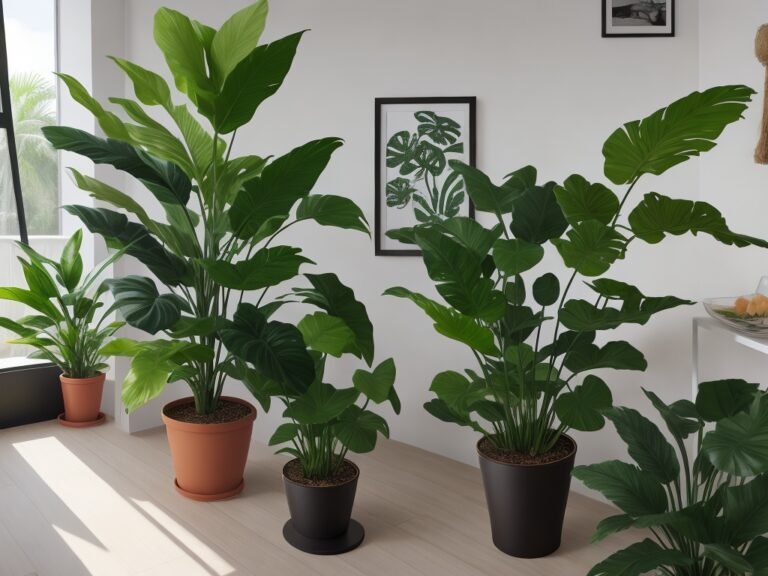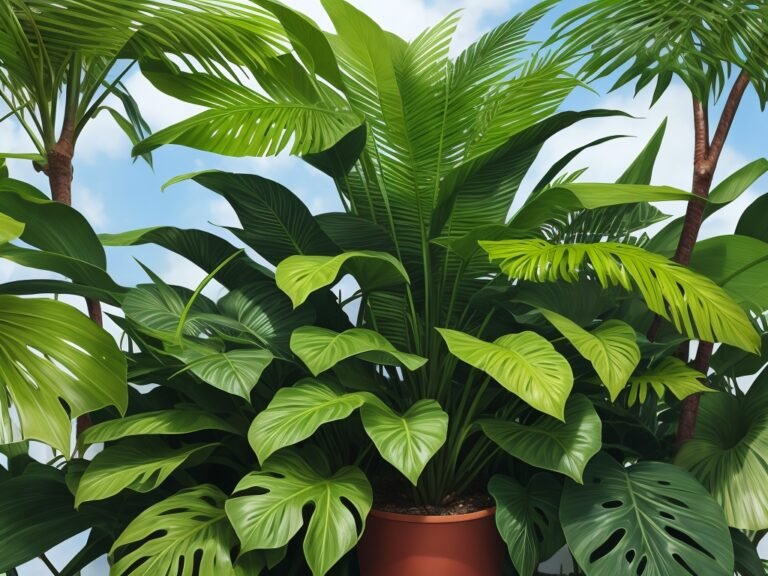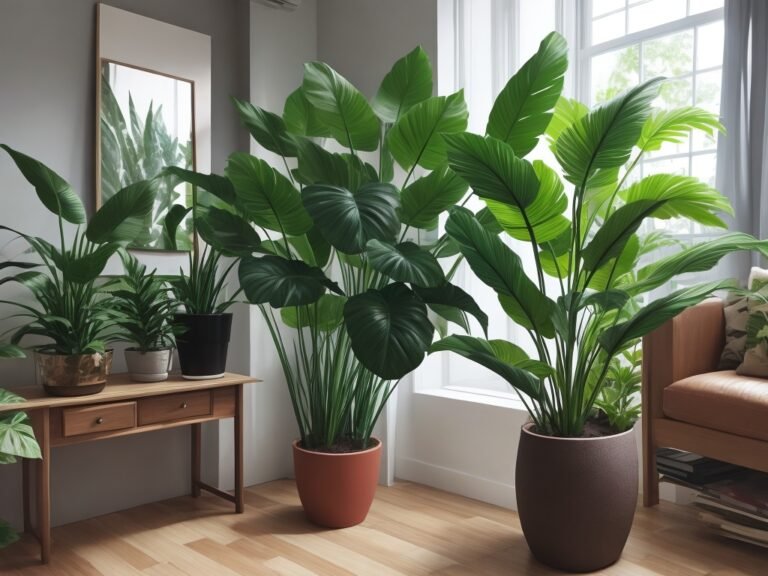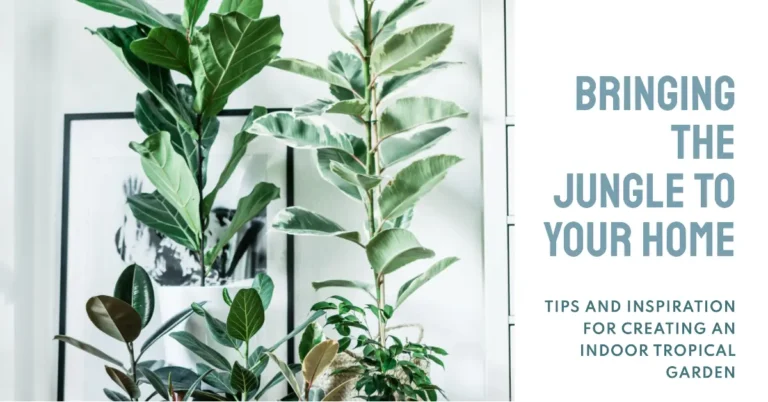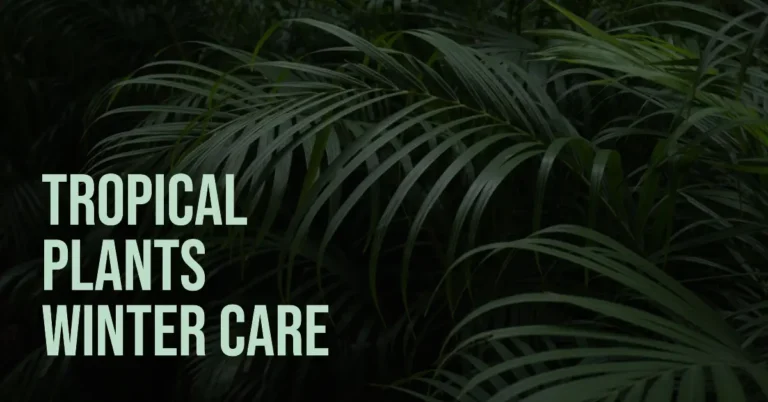Let There Be Light! Perfect Grow Lights For Tropical Houseplants
Key Takeaways:
- Choosing the right grow lights is essential for the well-being of your tropical houseplants.
- LED grow lights are the most efficient and cost-effective option for tropical houseplants.
- Adjusting the light intensity and duration is crucial to mimic natural light cycles.
- Regular monitoring and maintenance of your grow lights will ensure optimal growth for your tropical houseplants.
Welcome to the world of tropical houseplants! If you’re a plant lover like me, you know that providing the right conditions for your green babies is crucial. And when it comes to light, tropical houseplants require a little extra TLC.
That’s where grow lights come in.
In this article, we’ll dive into the importance of grow lights for tropical houseplants and explore the different types available. I’ll also share some key factors to consider when choosing the perfect grow lights and offer recommendations for specific tropical houseplants.
Plus, I’ll give you some tips on setting up your grow lights for optimal plant growth.
So, let there be light and let’s get started!
| Grow Light | Light Type | Pros | Cons | Price |
|---|---|---|---|---|
| LED Grow Light | Full spectrum | – Energy-efficient – Long lifespan – Low heat emission | – Initial high cost – Limited coverage area | $$ |
| Fluorescent Grow Light | Cool white or warm white | – Affordable – Good for young or small plants – Wide coverage area | – Generates more heat – Not suitable for flowering plants | $ |
| High-Intensity Discharge (HID) Grow Light | Metal Halide (MH) or High-Pressure Sodium (HPS) | – High light intensity – Suitable for all growth stages – Good for flowering plants | – Generates a lot of heat – Expensive to operate | $$$ |
| Incandescent Grow Light | Incandescent | – Affordable – Easily available | – Inefficient energy use – Generates excessive heat | $ |
Understanding the Importance of Grow Lights for Tropical Houseplants
Tropical houseplants rely on grow lights for proper indoor growth and development. Grow lights provide essential light energy that mimics natural sunlight, ensuring healthy and vibrant plants.
Why do tropical houseplants need grow lights?
Tropical houseplants need grow lights because they require sufficient light for photosynthesis, which is essential for their growth and survival.
In indoor environments, natural light may be limited or inadequate, so grow lights provide the necessary light spectrum and intensity to mimic the sun’s rays.
This ensures that the plants receive the energy they need to produce food and thrive.
Benefits of using grow lights for tropical houseplants
Grow lights offer numerous benefits for tropical houseplants. Firstly, they provide a consistent light source, ensuring that plants receive the proper amount of light, especially in areas with limited natural light.
Secondly, grow lights can be adjusted to cater to specific light intensity and spectrum needs of different plants, promoting healthy growth and blooming.
Lastly, grow lights allow for indoor gardening, enabling plant enthusiasts to grow tropical houseplants in any season and in locations where natural light is insufficient.
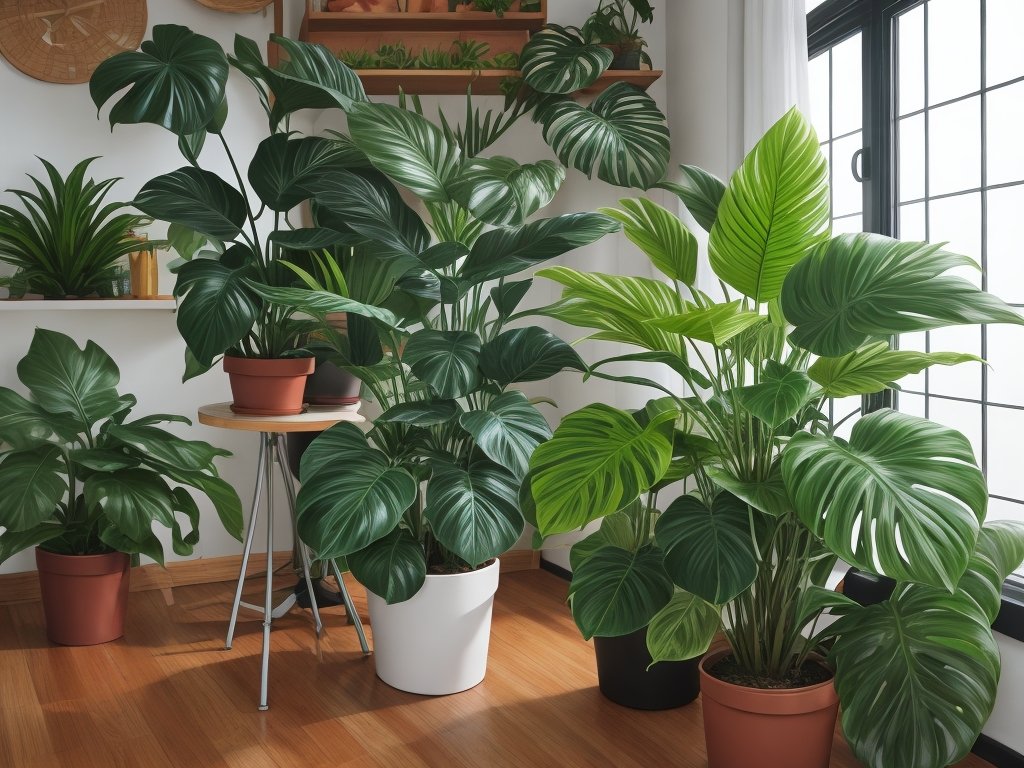
Types of Grow Lights for Tropical Houseplants
There are three common types of grow lights for tropical houseplants: incandescent, fluorescent, and LED grow lights.
Incandescent grow lights
Incandescent grow lights are popular but not the best choice for tropical houseplants. They emit a lot of heat and have a limited light spectrum, which may not meet the specific needs of plants.
They are also not energy-efficient and can increase your electricity bill.
Fluorescent or LED grow lights are better alternatives.
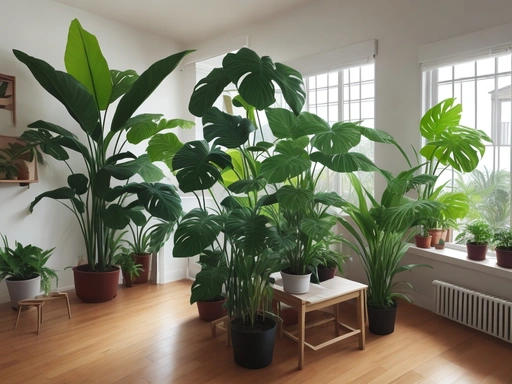
Fluorescent grow lights
Fluorescent grow lights are an excellent choice for tropical houseplants. They provide a balanced light spectrum that promotes healthy plant growth.
Fluorescent lights come in various types, including T5 and compact fluorescent bulbs.
They are energy-efficient, cost-effective, and produce less heat compared to other grow lights. Perfect for low to medium-light tropical houseplants.
LED grow lights
LED grow lights are a popular choice for tropical houseplants because they provide the right spectrum of light for optimal plant growth.
They are energy-efficient, cost-effective, and emit less heat compared to other types of grow lights.
LED grow lights can be easily adjusted to meet the specific light intensity requirements of different tropical houseplants.
Factors to Consider When Choosing Grow Lights for Tropical Houseplants
Choosing the right grow lights for tropical houseplants requires considering factors such as light intensity requirements, light spectrum, energy efficiency, coverage area, and heat emission.
Light intensity requirements of tropical houseplants
Tropical houseplants have different light intensity requirements depending on their species. Generally, they need bright, indirect light.
Here are some key points to remember about light intensity for tropical houseplants:
- Low-light plants: These plants thrive in low to medium light conditions. They require around 500 to 1000 foot-candles of light intensity.
- Medium-light plants: These plants prefer bright, indirect light. They need approximately 1000 to 2000 foot-candles of light intensity to grow well.
- High-light plants: These plants require intense, direct light. They need about 2000 to 3000 foot-candles of light intensity to thrive.
Keep in mind that factors like the distance between the plant and the light source can affect light intensity, so adjust accordingly for optimal growth.
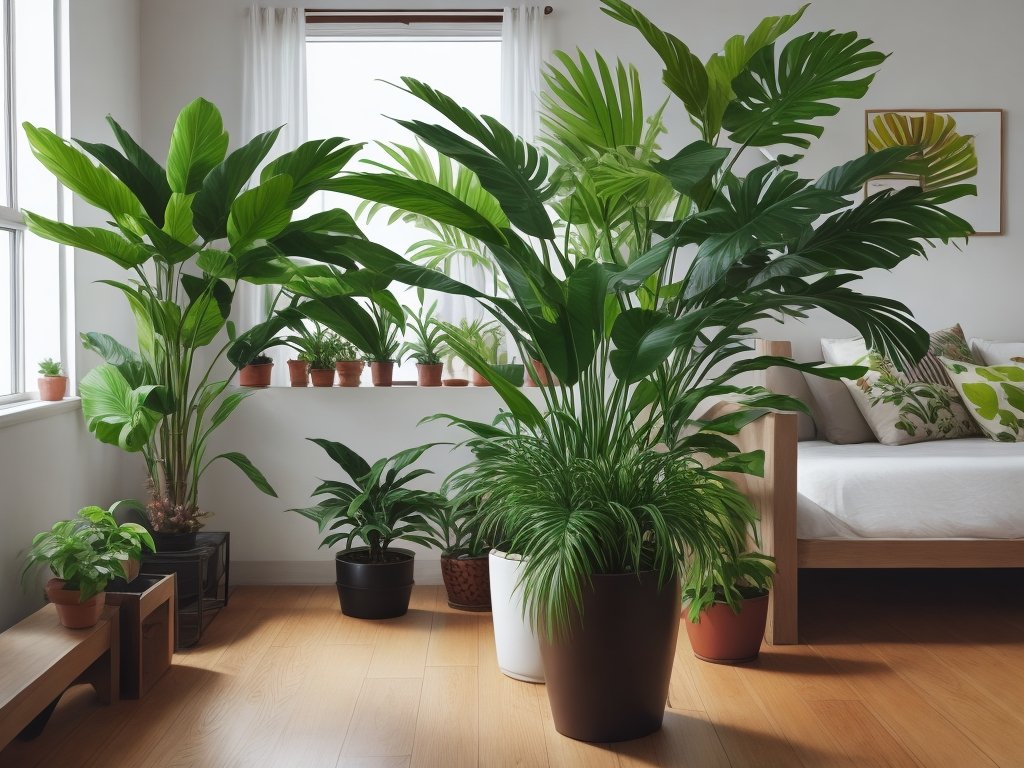
Light spectrum and its impact on plant growth
The light spectrum plays a crucial role in the growth of tropical houseplants. Different wavelengths of light, such as red, blue, and green, have specific effects on plant processes like photosynthesis and flowering.
Red light promotes flowering, while blue light stimulates leaf growth.
By using the right combination of light spectrum, we can optimize plant growth and development.
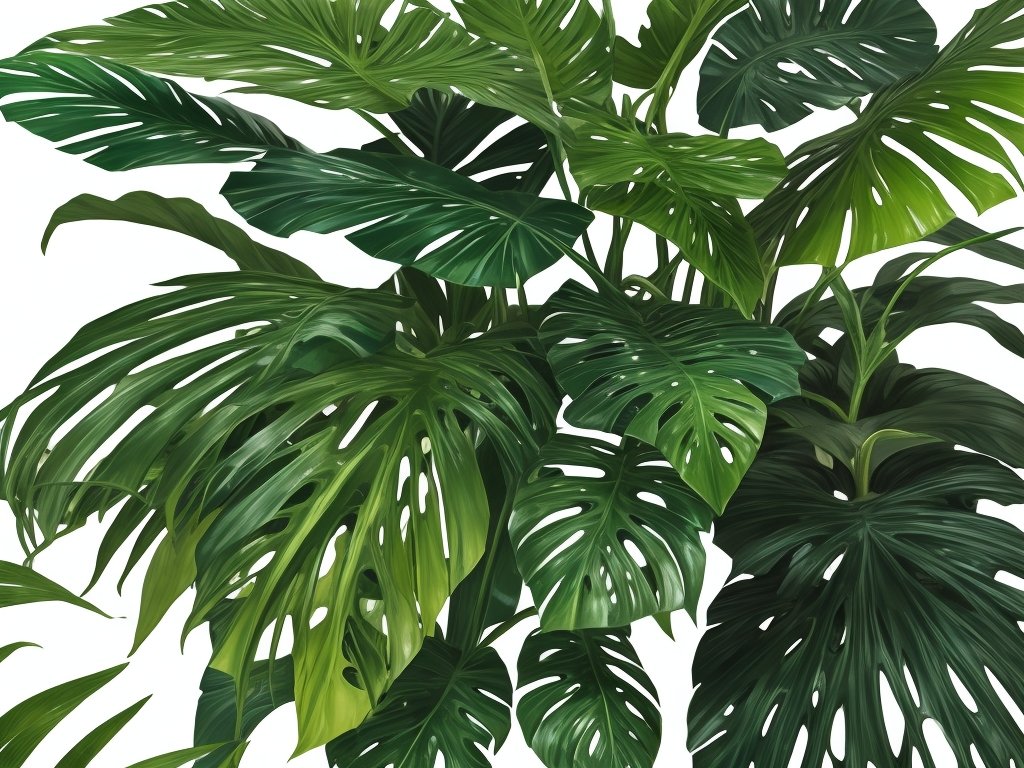
Energy efficiency and cost-effectiveness
Energy efficiency and cost-effectiveness are two important factors to consider when choosing grow lights for tropical houseplants.
- LED grow lights are the most energy-efficient option, consuming less electricity and producing little heat.
- While they may have a higher upfront cost, LED grow lights have a longer lifespan and lower maintenance costs, making them cost-effective in the long run.
Size and coverage area of the grow lights
Grow lights come in various sizes, and the size you choose depends on the coverage area you need.
Consider the dimensions of your growing space and the number of plants you have.
Ensure that the grow lights can sufficiently cover all of your plants, providing them with equal light distribution.
If you have a larger area, you might need multiple grow lights or larger fixtures to ensure adequate coverage.
Keep in mind that each plant should receive sufficient light for optimal growth.
Heat emission and plant safety
Heat emission from grow lights is an important factor to consider for plant safety.
High levels of heat can damage tropical houseplants, so it’s crucial to choose grow lights that emit minimal heat.
LED grow lights are the most suitable option as they generate little to no heat, ensuring the safety and wellbeing of your plants.
Selecting the Perfect Grow Lights for Specific Tropical Houseplants
Selecting the perfect grow lights for specific tropical houseplants involves considering the light requirements of low-light, medium-light, and high-light plants.
Low-light tropical houseplants and suitable grow lights
Low-light tropical houseplants need grow lights to supplement their natural light requirements.
Suitable grow lights for these plants include fluorescent and LED lights.
Fluorescent lights provide a balanced spectrum and are energy-efficient, while LED lights offer customizable spectrums and are long-lasting.
Both options are ideal for low-light plants.
Medium-light tropical houseplants and suitable grow lights
Medium-light tropical houseplants require grow lights that provide moderate levels of light. Suitable options include fluorescent grow lights and LED grow lights.
These types of lights emit the right spectrum of light for optimal plant growth without being too intense.
Make sure to consider the light intensity and spectrum requirements of your specific tropical houseplant when choosing the perfect grow lights.
High-light tropical houseplants and suitable grow lights
High-light tropical houseplants require intense light to thrive. The best grow lights for these plants are LED lights or high-output fluorescent lights.
These lights provide the necessary intensity and spectrum for robust growth.
Make sure to position the lights close to the plants for maximum benefit.
Setting Up Grow Lights for Tropical Houseplants
To set up grow lights for tropical houseplants, you’ll need to choose the right location, hang or mount the lights properly, set the correct height and distance, and create a suitable lighting schedule.
Choosing the right location for grow lights
The right location for grow lights is crucial to ensure optimal plant growth.
Place them directly above your plants, about 6-12 inches away.
Make sure the lights are positioned to cover the entire canopy.
Avoid placing them too close or too far as it can lead to uneven light distribution.
Hanging or mounting the grow lights properly
To hang or mount grow lights properly for your tropical houseplants, consider the following:
- Use adjustable hanging mechanisms or hooks to ensure the lights can be positioned at the correct height.
- Position the lights directly above the plants, providing even coverage.
- Ensure the lights are securely attached to prevent any accidents or damage.
- Consider using a light timer to automate the lighting schedule for consistent growth.
Setting the correct height and distance from plants
Setting the correct height and distance from plants is important to ensure optimal growth and prevent any damage. As a general guideline, keep the grow lights about 6-12 inches above the plants, adjusting as they grow.
Maintain a distance of 12-18 inches for fluorescent lights and 18-24 inches for LED lights.
Regularly monitor your plants for any signs of stress or burning, and make adjustments accordingly.
Creating a suitable lighting schedule
To create a suitable lighting schedule for your tropical houseplants, consider their specific light requirements.
Determine the ideal duration of daily light exposure based on the plant’s natural habitat.
Some plants thrive with 12-14 hours of light, while others may need less.
Experiment and observe your plants’ response to find the perfect balance.
Remember to provide periods of darkness too, as plants also need rest.
Additionally, it’s beneficial to mimic natural sunlight by varying the intensity of the light throughout the day, with brighter light in the morning and gradually dimmer light in the evening.
Frequently Asked Questions about Grow Lights for Tropical Houseplants
Can any regular light bulb be used as a grow light?
No, regular light bulbs cannot be used as grow lights for tropical houseplants.
They don’t provide the necessary light spectrum and intensity that plants need for photosynthesis.
You’ll need specialized grow lights that emit the right wavelengths and brightness for optimal plant growth.
Do grow lights emit heat? Is it harmful to plants?
Yes, grow lights do emit heat, but it is not necessarily harmful to plants.
The amount of heat produced depends on the type of grow light used.
LED lights generate very little heat, while incandescent lights produce more heat.
To prevent heat damage, it is important to choose the right type of grow light and ensure proper ventilation and distance between the light and the plants.
Can I use multiple types of grow lights together?
Yes, you can use multiple types of grow lights together for your tropical houseplants.
Combining different types, such as LED and fluorescent lights, can provide a more balanced spectrum and ensure your plants get the right amount of light.
Just make sure to position them properly and consider the light intensity and spectrum requirements of your specific plants.
Final Verdict
Choosing the right grow lights for your tropical houseplants is essential for providing them with the necessary light to thrive. By understanding the needs of your plants and considering factors such as light intensity, spectrum, energy efficiency, and coverage area, you can select the perfect grow lights to support their growth.
Whether you have low-light, medium-light, or high-light tropical houseplants, there are suitable options available, such as incandescent, fluorescent, or LED grow lights.
Setting up the grow lights correctly, including placing them in the right location, hanging them at the appropriate height, and following a suitable lighting schedule, will ensure optimal growth for your plants. By addressing common questions and concerns, such as using regular light bulbs, setting the duration of light exposure, and managing heat emission, you can confidently provide your tropical houseplants with the ideal lighting conditions.
With the right grow lights in place, your tropical houseplants will thrive and bring a touch of lushness to your indoor space.



